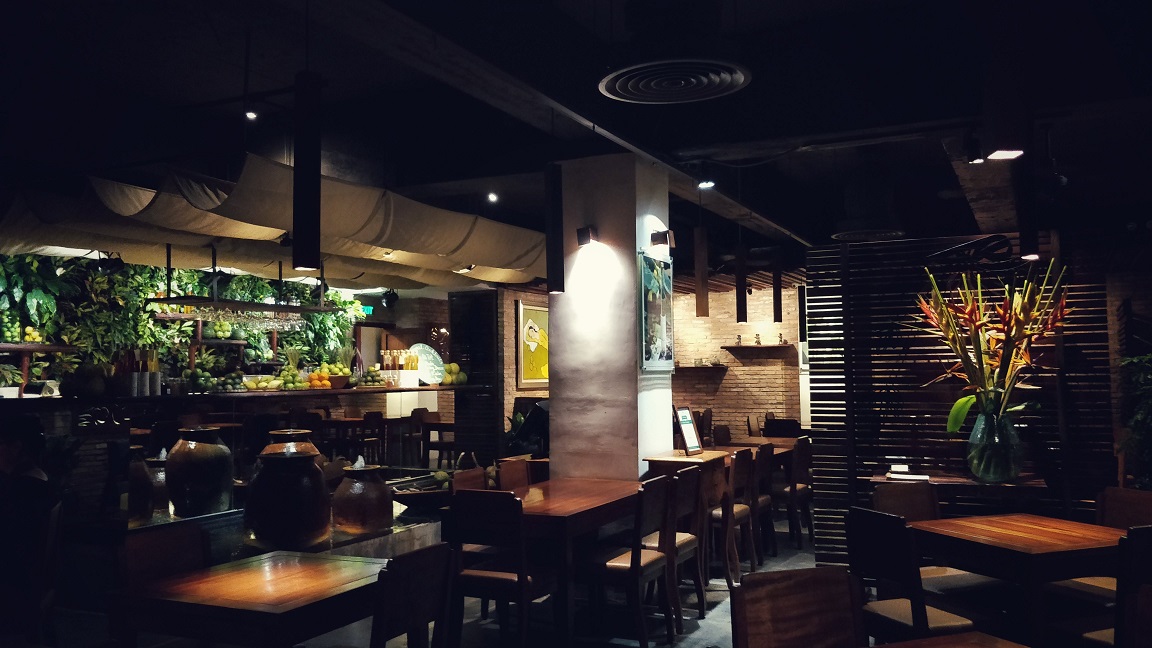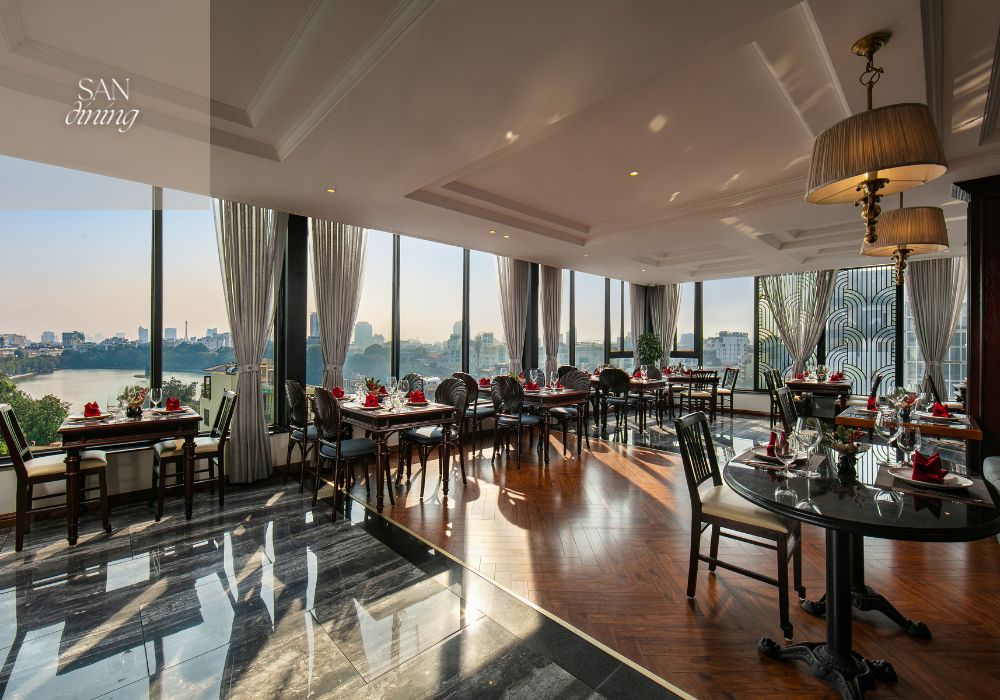Savor Authentic Asian Food With a Pan-Asian Twist for a Cooking Journey
Embarking on a cooking trip via genuine Oriental food, improved with a Pan-Asian twist, supplies a special possibility to check out the rich tapestry of tastes that specify the area's diverse cooking practices. As you contemplate these tempting dishes, consider the social narratives and historical impacts that shape them, each bite offering a tale waiting to be found. Fine dining experience Islamabad.

Discovering Pan-Asian Tastes
In the world of worldwide gastronomy, Pan-Asian food attracts attention for its exceptional diversity and the unified interplay of tastes from different Asian societies. This cooking method commemorates the abundant practices and unique components discovered throughout the continent, producing a tapestry of preferences that is both enjoyable and appealing. Key to Pan-Asian cuisine is its ability to stabilize contrasting flavors-- wonderful, salty, spicy, and sour-- while highlighting the quality and top quality of each component.
From the umami-rich soy sauce of Japan to the fiery chili peppers of Thailand, Pan-Asian cuisine provides a substantial palette of flavors. These components are often integrated in innovative means, boosting recipes with layers of intricacy. As an example, using great smelling herbs such as lemongrass and cilantro, typical in Vietnamese and Thai cuisine, adds a refreshing illumination to recipes, while the incorporation of coconut milk delivers a luscious, rich appearance.
The emphasis on fresh fruit and vegetables and fragrant flavors makes certain that each meal is not only a banquet for the palate yet additionally for the detects. Pan-Asian food welcomes restaurants to start a cooking trip, checking out the vast and varied landscapes of Asian gastronomy with every bite.
Fusion Dishes to Try
While Pan-Asian cuisine is commemorated for its standard tastes, the contemporary cooking landscape is significantly accepting blend meals that mix these traditional aspects with impacts from other areas. This cutting-edge approach not just honors the abundant heritage of Asian cookeries yet likewise presents unique taste experiences that interest modern tastes buds.
An archetype of such a combination meal is the Korean-Mexican taco, where seasoned bulgogi beef is wrapped in a warm tortilla, covered with kimchi and a hot gochujang-infused salsa. This combination weds the strong, savory tastes of Korea with the dynamic, fresh components of Mexican food. Likewise, sushi burritos have actually acquired popularity, joining together the fragile creativity of Japanese sushi with the passionate, hand-held comfort of a burrito, commonly featuring blend ingredients like tempura shrimp and avocado with a drizzle of wasabi mayo.
One more notable dish is Thai curry ramen, which instills the luscious, fragrant seasonings of Thai curry into the comforting broth of standard Japanese ramen, producing an unified blend that entices the detects. These blend recipes expand beyond simple novelty; they represent a culinary discussion in between cultures, motivating exploration and technology worldwide of Pan-Asian cuisine.
Necessary Ingredients and Flavors
To really value Pan-Asian food, one need to comprehend the necessary active ingredients and seasonings that develop its structure. This varied cooking style attracts from an abundant tapestry of Asian practices, using a harmonious mix of textures and flavors. Key components consist of soy sauce, fish sauce, and oyster sauce, which give a mouthwatering umami deepness necessary to Asian dishes. Complementary to these are rice vinegar and mirin, offering a fragile level of acidity and sweetness.
Fragrant elements are critical, with garlic, lemongrass, and ginger being ubiquitous throughout numerous Pan-Asian recipes. These ingredients provide a great smelling base that improves the complexity of tastes. Flavors such as star anise, cardamom, and cinnamon present warmth and personality, resembling impacts from regions like China and India.

Cooking Methods and Tips
Understanding the art of Pan-Asian cuisine needs knowledge with its distinct cooking methods, each contributing to the vibrant tapestry of tastes this cooking tradition is click this link commemorated for. Central to these approaches is the stir-fry, a fast food preparation method that maintains the nutritional integrity and vibrant colors of active ingredients. Utilizing a wok, the stir-fry method enables even warm circulation, essential for accomplishing the particular texture and flavor equilibrium of Pan-Asian meals.
Another essential method is steaming, specifically prevalent in Chinese cuisine. This gentle approach preserves the all-natural tastes and nutrients of active ingredients, making it optimal for fish and shellfish and veggies. Dumplings, a precious staple, frequently benefit from steaming, resulting in soft, delicious textures.
Barbecuing, also integral, gives read more smoky depths to meals such as Korean bulgogi or Japanese yakitori (asian fusion restaurant). This method typically includes marinating active ingredients, enabling tastes to permeate deeply prior to food preparation over an open fire or warmer
Finally, mastering the art of stabilizing flavors-- pleasant, sour, salted, bitter, and umami-- is vital. Correctly layering these elements can raise a dish from ordinary to phenomenal, using a complex and satisfying culinary experience that personifies the significance of Pan-Asian cuisine.
Eating Experiences Worldwide
Around the world, Pan-Asian food offers an exceptional dining experience, celebrated for its abundant tapestry of flavors and vivid presentations. This cooking phenomenon has gone beyond cultural boundaries, catching the hearts and palates of food lovers worldwide. In cosmopolitan cities like New York, London, and Sydney, Pan-Asian restaurants work as melting pots where cooking traditions from Thailand, Japan, China, and beyond converge, offering diners with an eclectic mix of recipes that highlight the region's diversity.
The worldwide allure of Pan-Asian cuisine exists in its capacity to supply both credibility and development. Chefs masterfully marry conventional components such as lemongrass, soy sauce, and miso with contemporary methods, leading to dishes that are both familiar and refreshingly new. This blend permits restaurants to start a cooking trip that respects heritage while welcoming modernity.
Moreover, dining experiences are raised through thoughtfully developed environments that mirror the ethos of Pan-Asian appearances. From minimal Japanese-inspired insides peking house to lively Thai-themed areas, each restaurant uses an unique ambiance that enhances the culinary offerings. Because of this, clients are not just taking in a meal however partaking in a social experience, making Pan-Asian dining a really global sensation.
Verdict
The exploration of Pan-Asian food supplies an extensive understanding of the detailed interplay of flavors and cooking traditions across Asia. By embracing blend meals such as Thai curry ramen and sushi burritos, the culinary trip not just highlights the versatility of typical ingredients however additionally showcases innovative modern-day methods. This gastronomic journey, enhanced by crucial flavors and cooking methods, provides an unique chance to appreciate the cultural diversity and cooking creativity that specify Pan-Asian cuisine on an international scale.
Getting started on a culinary trip with authentic Oriental food, improved with a Pan-Asian spin, uses a distinct possibility to explore the abundant tapestry of flavors that specify the region's diverse cooking traditions.In the realm of global gastronomy, Pan-Asian food stands out for its amazing variety and the unified interplay of tastes from numerous Asian cultures. Trick to Pan-Asian food is its capability to stabilize different flavors-- wonderful, salted, spicy, and sour-- while highlighting the quality and quality of each active ingredient.
